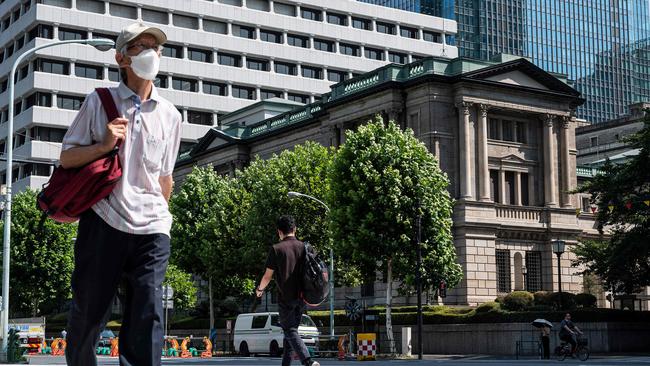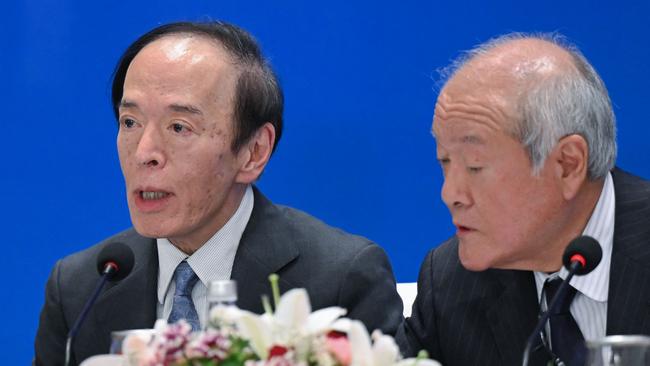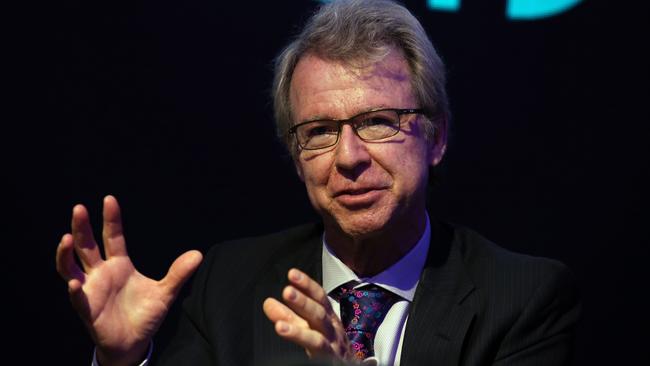Bank of Japan policy tweak has a ripple effect on world markets
The BoJ’s policy tweak was a surprise only because it had repeatedly denied that it was on the way.

A hawkish tweak to the Bank of Japan’s monetary policy made for a dramatic end to a busy week.
The dollar and shares retreated as bond yields jumped after stronger-than-expected US economic data and the BoJ decision to effectively lift the top end of its tolerance band for the 10-year Japan government bond yield to 1 per cent, from 0.5 per cent.
The dollar lost about 1.2 per cent for the week, falling to US66.27c – its lowest level in more than two weeks.
The S&P/ASX 200 index trimmed its rise for the week to 1.2 per cent as it fell 0.7 per cent to 7403.6 points on Friday, while the 10-year bond yield jumped 14 basis points to 4.07 per cent.
Crude oil, copper and nickel prices rose after China’s politburo said it would aim to increase domestic demand, but iron ore prices fell to a two-week low after hitting a 3½-month high.
Geopolitical risks from the Ukraine war escalated, with Russian attacks on Ukrainian grain exporting infrastructure after the collapse of the Black Sea grain deal last week. And what was effectively a mild tightening by the BoJ followed widely expected interest rate increases in the US and Europe. But there were silver linings in China’s stimulus signals, lessening fear of more rate rises in the US, EU, Canada and Australia – the later following lower than expected inflation and retail trade data.
There was also less fear of a hard landing in the US, with stronger-than-expected economic data and Fed chairman Jerome Powell’s comment that Fed staff were no longer forecasting a recession.

The BoJ’s policy tweak was a surprise only because the BoJ repeatedly denied it was coming.
Moreover, with inflation staying well above its target, some policy normalisation is inevitable.
But despite short-term risks for the global bond market that could dampen the risk appetite – as occurred the last time the BoJ conducted a similar policy tweak in December – the global inflation problem is rapidly coming under control and Japan is really just a follower in this regard.
“This appears to be designed to allow the BoJ to retain other aspects of its ultra-easy monetary policy for now, but with various inflation measures remaining above its 2 per cent target it is a move in the direction of tightening, albeit a very mild one,” AMP head of investment strategy and chief economist Shane Oliver said.
“Since Japan is a large holder of foreign bonds, allowing Japanese bond yields to rise further will put some upwards pressure on global bond yields, as we have seen in the last few days. But with Japanese government bonds still set to offer much lower yields than in other markets, the impact is ultimately likely to be minor, as was the case after the BoJ raised the yield cap from 0.25 per cent to 0.5 per cent last December.”
Meanwhile the IMF upgraded its 2023 global growth forecast to 3 per cent and continues to see 3 per cent in 2024. And the Fed upgraded its assessment of economic growth from “modest” to “moderate”, and repeated that it would be “determining the extent of additional policy firming that may be appropriate to return inflation to 2 per cent over time”. But Powell was noncommittal on whether the Fed would raise rates again in September, with the outcome being data-dependent.

The money market only saw a 16 per cent chance of another US rate rise.
Dr Oliver said the Fed had probably finished lifting rates, though resurgence in growth that curtailed the cooling in the jobs market was “the main risk” to this view.
Similarly, the ECB dropped its tightening bias in favour of full data dependence, with ECB president Christine Lagarde no longer saying there was more “ground to cover” in terms of policy normalisation.
While leaving the door open to another rate rise, she said the ECB would approach the next meeting in September with an “open mind” as to whether to lift rates or hold, leaving the money market to attach a 24 per cent chance to another rate rise in Europe.
In Australia, the news was even better for the interest rate outlook, which is why the S&P/ASX 200 hit a five-month high of 7472.3 on Thursday, before being knocked by the spike in bond yields, which resulted in bearish daily key reversal patterns forming on the S&P 500 and Nasdaq Composite.
With inflation and retail trade data undershooting expectations, several economists pushed out their expectations of another interest rate rise from August to the December quarter.
From its peak around 8 per cent on-year, Australia’s quarterly CPI inflation rate has now fallen to 6 per cent and the monthly inflation indicator has fallen to 5.4 per cent on-year.
“Just as we lagged the US on the way up by about six months (as we were slower to reopen our economy and the global energy price crisis took longer to hit Australia), we are lagging it on the way down by about six months,” Dr Oliver said.
He said he expected the downside surprise in inflation and retail sales data to lead the RBA to keep rates on hold next week, particularly as the ongoing weakness in real retail sales highlighted the “high and increasing risk that it will knock the economy unnecessarily into recession if it keeps tightening”.



